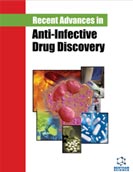Abstract
Influenza is an acute viral infection of the respiratory tract caused by the
Alphainfluenzavirus whose subtypes were responsible for historical pandemics. Recently, the coronavirus SARS-CoV-2 has also affected the world, causing acute respiratory
syndrome, thus rendering the search for anti-influenza and anti-SARS-CoV-2
compounds an urgent task. Plants of the genus Siparuna are used in Brazilian folk
medicine for treating colds, fever, headaches, and rheumatic pain as well as
gastrointestinal disorders. S. apiosyce (“Limão Bravo”) is mentioned in the first
Brazilian Pharmacopeia due to its importance as an ingredient in syrup and cough
drops. Alkaloids, methylated and glycosylated flavonoids stand out as secondary
metabolites described for these species, being also well described in the literature for
their antiviral activity. During our investigation of Brazilian plants active against viral
infections, the anti-influenza activity of five Amazonian Siparuna (S. cristata, S.
decipiens, S. glycycarpa, S. reginae and S. sarmentosa) were investigated, showing the
n-butanol extracts of S. glycycarpa and S. sarmentosa as the most active. Dereplication
of these extracts pointed alkaloids, O- and C-glycosylated flavonoids as well as
dihydrochalcones and a procyanidin dimer as potential active metabolites. On the other
hand, the dichloromethane extract from S. cristata containing methylated flavonoids
was able to inhibit the in vitro replication of SARS-CoV-2, where it was shown that
retusin and kumatakenin presented a higher selectivity index than lopinavir/ritonavir
and chloroquine controls. Further in-silico studies showed the potential interaction
between these flavonoids and the virus proteases 3CLpro and PLpro. Here we highlight
the possible application of compounds isolated from Siparuna species as antiviral
agents.






















